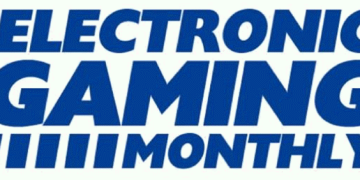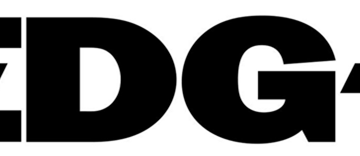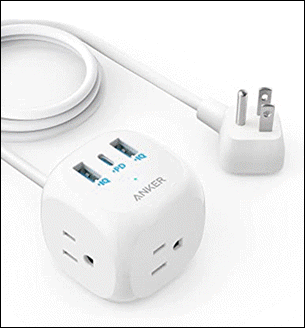Kob Monney
2025-09-21 04:00:00
www.trustedreviews.com
September has been one of those very busy months. Lots of announcements, lots of events, lots of things to keep track of.
In all the hubbub and noise, some things do tend to fall off the radar – at least for me. One of those things was Dolby Vision 2.
Dolby Vision 2 is a “Big Thing” in the tech world. The HDR format has virtually made itself indispensable within home cinema, whether through TVs, physical media or streaming. Oftentimes, you’ll hear someone talking about whether a device has Dolby Vision support – that’s how relevant it’s become in the discussion around media consumption.
But Dolby Vision is also a rather confusing piece of tech at times, and its announcement at IFA 2025 added to the noise. Rather than running into the end zone and scoring a touchdown, the announcement was something of a fumble.
Confusion reigns
I’m sure Dolby Laboratories will see the announcement of its new tech as a ‘win’, but talking to journalists in the aftermath of the announcement, we were all pretty confused.
It has a “next-gen image engine”, which is one of those phrases that sounds completely nebulous. It “unlocks even more out of your TV”, which again is more marketing-speak.
We know it’ll feature AI – or content intelligence as Dolby refers to it – but what it seems to be describing is essentially what Dolby Vision IQ is meant to do: enhancing black levels and reacting to different levels of ambient light in your home.

The only aspect that seems really different is the sports and gaming optimisation, but different in the sense that there may not be a separate Dolby Vision Game mode that’s activated, but it’ll come under the same umbrella rather than be a separate mode.
I’m a little baffled by the Authentic Motion feature, which seems to suggest it’s doing something that Dolby Vision doesn’t already do (motion interpolation) or perhaps will attempt to do differently.
I’ve read the press release a few times now. It’s something of a masterpiece in saying something, but not actually revealing much. There was a demo at IFA 2025, but strangely, some were invited ahead of time, and others weren’t told there was a demo to be seen.
Don’t start as you mean to go on
Even more confusing is the reaction from the TV manufacturers themselves. Hisense is the official partner for Dolby Vision 2 (Canal+ has signed up to be a content provider), but even people at Hisense seemed to be light on details about the deal the company was a part of.
It seems TCL knew of Dolby Vision 2’s existence before IFA but may have been playing shenanigans with its display, in that it did not appear to be playing any Dolby Vision 2 content. TCL was calling it Dolby Vision 2.0, which implies it didn’t have permission to call it a Dolby Vision 2 TV.
When I spoke to Sony, its reaction was pretty standard PR response (interested to know more, will have discussions with Dolby etc), but it seemed as if they were taken by surprise with the announcement.
LG went as far as to say that they had no plans to support it and then backtracked. It was a response that suggested the thinking behind the scenes wasn’t particularly joined up.
There are questions. Lots of them.


Will Dolby Vision 2 be a software upgrade? Some seemed to think so – TCL had a 2025 C8K as part of its “demo” (which was actually a Dolby FlexConnect demo), but that TV runs off a MediaTek Pentonic 700 chip that came out in 2024. Dolby Labs references MediaTek’s Pentonic 800 chip as the first silicon chip that will support Dolby Vision 2.
That implies Dolby Vision 2 will be a hardware upgrade, making it exclusive to TVs from 2026 onwards. If true, that’d create a segmented market, which rather goes against the creed of Dolby Vision. Then again, there are already multiple versions of Dolby Vision in existence, so there have always been different flavours and forms.
What about physical media? Will there need to be new 4K players? Will it make a difference to 4K Blu-rays? Will Dolby Vision 2 replace the current standard on streaming services, or will you get a Dolby Vision 2 performance only on a TV that supports it, making it more of a two-tier experience? What about mobile device support?
Dolby’s promo video heavily highlighted sports, but this is another area that evidently confused me. Live broadcasts are shown in HLG HDR so does Dolby want to push into this area of programming? All TVs are required to support HDR10 and HLG, but Dolby Vision is an optional extra…
When you start to break it down, there are a lot of questions about Dolby Vision 2.
Should Samsung join in the ‘fun’?
I see a lot of reviewers put down as their ‘con/negative’ in reviews that Samsung TVs don’t support Dolby Vision. I myself don’t do that (at least anymore) as it suggests that a Dolby Vision TV offers the best experience. It can look fabulous, but the panel, brightness, backlight and colour range can all have an effect – Dolby Vision seeks to make the experience more consistent across TVs.
And Samsung’s been in the corner of HDR10+, which it champions as a rival. But I do wonder whether not supporting Dolby Vision means it loses out in the discussion when it comes to HDR. Dolby Vision 2 should be seen as major inflection point for the industry and Samsung’s not really part of the conversation or driving it anyway.


I get the reason why it doesn’t support Dolby Vision – it doesn’t want picture quality to be prescribed to them and has it’s own philosophy. But other TV brands have their own philosophy and still manage to be different from one another. Samsung risks being irrelevant in this area of the market.
There’s no arguing against the struggles of HDR10+ to be heard and seen. Even when HDR10+ gets a boost – like the announcement of support on Netflix – it’ll only be available on Samsung TVs. It’s not as if the Netflix apps on a Panasonic or Philips TV will start streaming in HDR10+. Dolby Vision will always get priority. What’s the point of paying for the license for it if you’re not going to use it?
Perhaps Samsung is figuring out its response right now. HDR10+ 2? Or should that be HDR12?
Meet the Anker 20W USB C Power Strip, the ultimate desk power solution! With 9,659 ratings and a stellar 4.6 out of 5 stars, it’s a trusted favorite for its reliability and performance. Over 3K+ units were bought in the past month!
This compact power cube features 3 AC outlets, 2 USB-A ports, and 1 USB-C port to power everything on your desk with ease. Equipped with a 7-point safety system, including fire resistance, circuit-overload protection, and short-circuit protection, it gives you peace of mind. Plus, enjoy super-fast charging for your devices.
Grab this versatile power strip for only $13.99. Buy Now on Amazon!
Help Power Techcratic’s Future – Scan To Support
If Techcratic’s content and insights have helped you, consider giving back by supporting the platform with crypto. Every contribution makes a difference, whether it’s for high-quality content, server maintenance, or future updates. Techcratic is constantly evolving, and your support helps drive that progress.
As a solo operator who wears all the hats, creating content, managing the tech, and running the site, your support allows me to stay focused on delivering valuable resources. Your support keeps everything running smoothly and enables me to continue creating the content you love. I’m deeply grateful for your support, it truly means the world to me! Thank you!
|
BITCOIN
bc1qlszw7elx2qahjwvaryh0tkgg8y68enw30gpvge Scan the QR code with your crypto wallet app |
|
DOGECOIN
D64GwvvYQxFXYyan3oQCrmWfidf6T3JpBA Scan the QR code with your crypto wallet app |
|
ETHEREUM
0xe9BC980DF3d985730dA827996B43E4A62CCBAA7a Scan the QR code with your crypto wallet app |
Please read the Privacy and Security Disclaimer on how Techcratic handles your support.
Disclaimer: As an Amazon Associate, Techcratic may earn from qualifying purchases.


































![Shelter of SURSUR [Remastered] V2.0 : mascot horror gameplay walkthrough](https://techcratic.com/wp-content/uploads/2025/09/1758405374_maxresdefault-360x180.jpg)



































































